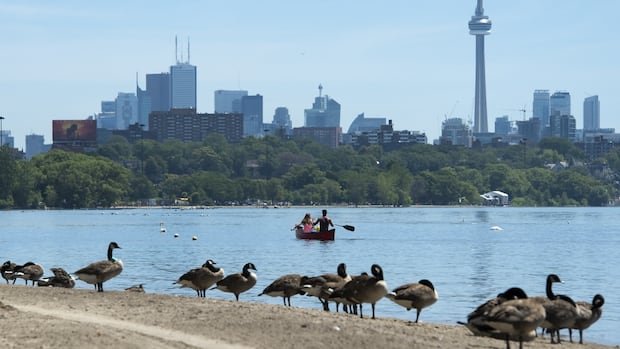A recent examination of city records reveals a significant drop in bird numbers on Toronto beaches over the last twenty years. Publicly available data indicates a 73% decrease in waterfowl observed on the city’s beaches from 2008 to 2024, suggesting that the waterfront areas have become less welcoming to these animals. The counts, totaling 11,488, were performed by lifeguards rather than scientists, offering valuable insights into the conditions for waterfowl in Toronto during the summer months.
The data shows that the average number of waterfowl per count across all beaches decreased from 51 in 2008 to 14 in 2024. Particularly affected beaches include Sunnyside Beach, where the average count dropped from 100 in 2008 to 17 in 2024, and Centre Island Beach, which saw a decline from 92 to 15 over the same period.
According to a spokesperson from Toronto Public Health, the decrease in bird presence was anticipated as the city has been taking measures to discourage birds from congregating on the beaches while open for swimming to reduce droppings. These efforts involve guiding and relocating birds, enacting regulations against feeding waterfowl, and using dogs to deter them.
The reduced bird population translates to fewer droppings and a lower risk of E. coli contamination in beach waters. However, experts raise concerns about the implications for wildlife habitat and whether the birds are finding alternative homes or facing declining populations due to human activities.
Marc Cadotte, a biology professor at the University of Toronto Scarborough, emphasizes the need for further scientific studies to determine the impact of deterrents on bird habitats. He questions whether these measures might result in habitat loss for birds and highlights the potential long-term consequences of driving wildlife out of usable areas.
While the data provides valuable insights into the changing bird populations on Toronto beaches, experts caution against using it as a definitive measure of overall waterfowl presence in the city. They underscore the complexity of tracking bird movements and the need for more comprehensive data to understand the dynamics of bird populations in urban environments.
Despite the limitations of the data, experts believe it offers valuable information on beach conditions and wildlife interactions. The ongoing decline in bird numbers raises concerns about the broader ecological implications and underscores the importance of balancing human activities with wildlife conservation efforts.

